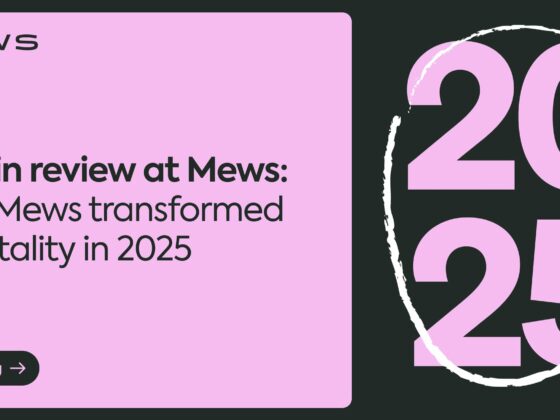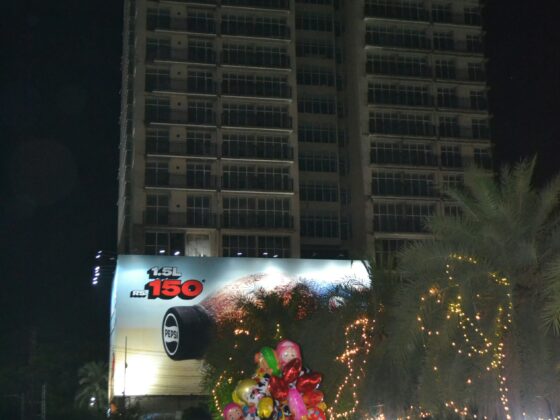
Even heroes face obstacles. For hotel revenue managers, a few persistent challenges can slow them down, preventing them from focusing on broader strategies that maximize revenue, profitability, and guest satisfaction. In this blog post, we’ll highlight three significant hurdles they face, providing insights into why these challenges exist and how revenue managers can position themselves and their hotels for success. By overcoming these roadblocks, revenue managers can unleash their full potential and become the strategic powerhouse every hotel needs to thrive.
1. Wrestling with Inconsistent (and Overwhelming) Data
Problem in Focus
The first significant obstacle revenue managers grapple with is the sheer volume of data flowing in from multiple, often disjointed, sources—Property Management Systems (PMS), OTAs, market intelligence platforms, internal spreadsheets, and more. Each source may record and label data differently, leaving revenue managers to play detective as they reconcile mismatches, duplicates, and outright errors. The end goal is to create one reliable source of truth—but it can feel like chasing a moving target.
Adding to the complexity, no one else seems to value data quality quite like the revenue manager does. Overworked staff often take shortcuts or neglect proper data entry due to time pressures and minimal training. Many hotels also run siloed systems that don’t integrate seamlessly, meaning guest reservations, folios, and other transactional data are rarely linked. As a result, it becomes nearly impossible to get a complete picture of guest spending and behavior.
Why It’s Frustrating
- High Stakes: When key pieces of data are missing, duplicated, or inaccurate, rate and distribution decisions suffer. A single oversight can throw off a hotel’s entire pricing strategy, causing lost revenue or misaligned rates.
- Time Sink: Hours spent cleaning up data in spreadsheets and cross-referencing reports are hours not spent on big-picture strategies like analyzing demand patterns, optimizing distribution channels, or developing upselling programs.
- Pressure to Act Quickly: In the fast-paced world of hospitality, timing is everything. If data quality issues delay critical insights, you could miss the perfect moment for a targeted promotion or a lucrative rate adjustment.
- Lack of Buy-In: The front desk, reservations, and other hotel staff may not fully appreciate how vital accurate data is. Without proper training and incentives, they’re prone to inputting incomplete information or skipping steps—further complicating data integrity.
- System Silos: Disconnected or outdated systems prevent a holistic view of guest behavior. If reservations, point-of-sale transactions, and loyalty data remain in separate silos, uncovering total spending per guest or linking booking patterns to ancillary purchases becomes a painstaking manual chore.
The Strategic Imperative
- Data Consolidation Tools: Implement platforms that automatically pull data from all key systems, standardize it, and flag inconsistencies. This frees up time for analysis rather than manual cleanup.
- Cross-Functional Training: Provide ongoing training sessions for frontline staff, emphasizing why accurate data matters. Consider incentives or simple QA processes that reward correct data entry.
- Process Alignment: Work with department heads to create SOPs that uphold data integrity, ensuring each step (from booking to checkout) captures essential information.
- Integrated Technology: Whenever possible, invest in solutions that eliminate silos by linking guest profiles across reservations, folios, and other transactional platforms. This unified view is the foundation of actionable analytics.
Big Takeaway
For a revenue manager, data is currency. When that currency is tarnished by inaccuracies or departmental silos, its value plummets. By investing in integration-focused technology, engaging staff in data stewardship, and establishing clear procedures, revenue managers can transform a messy data landscape into an analytical goldmine—empowering them to make swift, informed decisions that directly drive profitability.
2. Attracting the Most Profitable Guests
Problem in Focus
For many hotels, success is measured not just by heads in beds but by maximizing profitability per guest. While a high occupancy rate might look good on paper, relying heavily on OTAs and other third-party channels can erode margins through commissions and fees. Compounding the issue, many hotels don’t have a clear picture of which guests drive the total revenue, including their potential for ancillary spending on dining, spa services, and more. Segmentations often hinge on broad categories—leisure vs. corporate, transient vs. group—without diving into which specific segments or personas are truly lucrative.
Why It’s Frustrating
- Distribution Costs: Third-party bookings can carry hefty commission rates, slicing into profits even when rooms are fully booked.
- Evolving Guest Segments: Guest preferences, habits, and spending patterns shift rapidly, especially in response to economic changes or new travel trends. Keeping your segmentation and targeting strategies fresh is a constant uphill battle.
- Data Silos Across Departments: It’s challenging to get a holistic view of a guest’s total spending when every department (F&B, spa, golf, etc.) tracks data separately. This fragmented picture makes it tough to identify your most profitable guest segments.
- Misalignment with Other Teams: Marketing might focus on generating high volumes of leads or website visits, while sales teams chase large group contracts. Meanwhile, the revenue manager has to ensure each of these efforts actually yields guests who contribute the most to the bottom line. Misalignment in the definition of “ideal guest” leads to scattered strategies and missed revenue opportunities.
The Strategic Imperative
- Focus on Profitability over Occupancy: Emphasize total guest value (rooms + ancillary purchases) rather than simply filling rooms at any cost. Shift your metrics toward NetRevPAR, Revenue per Guest, or even Flow-Through for more comprehensive insight.
- Build (and Update) Detailed Guest Segments: Move beyond traditional segments like corporate and leisure. Develop nuanced guest personas based on booking channel, price sensitivity, length of stay, and on-property spending patterns.
- Collaborate with Marketing and Operations: Work together to share data, define common goals, and coordinate campaigns that attract the right guests. Create incentive structures that reward efforts aligned with overall profitability, not just volume.
- Leverage Direct-Booking Channels: Incentivize direct bookings through loyalty programs, exclusive offers, or seamless booking experiences. Reducing dependency on third-party platforms helps retain more of each booking’s revenue.
Big Takeaway
Shifting from an occupancy-based mindset to one that prioritizes profitable guest segments can unlock tremendous potential for hotels. When revenue managers, marketing teams, and operations teams unite around a strategy to target high-value guests—support evident clear data insights—they gain more control over revenue streams, reduce commission costs, and ultimately boost the hotel’s bottom line.
3. Forecasting in the Midst of Uncertainty
Problem in Focus
Demand forecasting is at the heart of every revenue manager’s decision-making process. When done right, it guides pricing, distribution strategies, and staff scheduling—all critical to running a profitable hotel. However, unpredictable market conditions, shifting travel trends, and sudden group cancellations can make accurate forecasting feel like a never-ending guessing game. Moreover, forecasting total revenue (beyond just rooms) adds another layer of complexity, especially when each revenue source (F&B, spa, events, etc.) behaves differently and relies on data that might be fragmented or of questionable quality.
Why It’s Frustrating
- Reduced Value of Historical Data: After major disruptions—like economic downturns or global events—past booking and spending patterns may not reflect current realities. Historical data becomes less reliable as a baseline for future projections.
- Incomplete Information: Siloed communication about group reservations, marketing campaigns, or local events can blindside the revenue manager. The lack of timely, accurate updates leads to last-minute forecast adjustments.
- Inconsistent Training and Data Entry: Frontline staff are often not trained to input detailed, accurate data for non-room revenue, such as restaurant sales or spa upsells. Their shortcuts or inconsistencies create significant blind spots in the total revenue forecast.
- Varying Behaviors Across Revenue Streams: While room demand might follow specific seasonal or corporate patterns, ancillary revenues (F&B, spa, etc.) can fluctuate based on different factors—weather, local promotions, or even guest demographics. Without quality data linking guest behavior across all departments, pinpointing these trends is cumbersome.
- Fear of Getting It Wrong: Overestimating demand can result in unsold inventory while underestimating leads to missed opportunities and potential guest dissatisfaction. This high-stakes environment leaves little room for guesswork.
The Strategic Imperative
- Integrated Data Collection: Encourage consistent data entry protocols for all revenue-generating departments. Using connected systems or a central platform can help track room revenue alongside ancillary spending, giving a clearer picture of total profitability.
- Collaborative Forecasting Process: Build a routine cross-departmental meeting cadence (e.g., revenue, marketing, F&B) to share upcoming event details, promotions, and other factors that influence future demand.
- Adaptable Forecast Models: Augment historical data with real-time market insights and leading indicators (e.g., web traffic, booking pace) to catch shifts earlier. Consider scenario planning or contingency forecasts to deal with unpredictable events.
- Train and Incentivize Staff: Properly train front-office, F&B, and spa teams on data input and the importance of accurate reporting. Recognize and reward teams that maintain high data quality standards, fostering a culture of shared responsibility.
Big Takeaway
Forecasting is never easy in a dynamic market—particularly when data gaps and inconsistent processes hinder a holistic view of your hotel’s revenue potential. By consolidating data sources, improving cross-departmental collaboration, and honing more flexible forecasting models, revenue managers can better navigate uncertainty and push their hotels toward greater profitability.
Final Thoughts & Key Takeaways
Revenue managers are the behind-the-scenes heroes keeping a hotel on its path to profitability. Yet their mission is made more difficult by three interlocking challenges: inconsistent data, attracting the right (most profitable) guests, and forecasting total revenue in a constantly shifting landscape. Addressing these challenges goes beyond merely upgrading technology; it requires aligned processes, proper training, cross-department collaboration, and a shift in how hotels view and use data.
- Data is Power—When It’s Accurate
- Invest in integration to reduce silos.
- Train and incentivize staff to input accurate data.
- Continuously monitor and refine data management processes.
- Aim for Profit, Not Just Occupancy
- Identify your most profitable guest segments—and target them specifically.
- Collaborate with marketing and operations to align on the same high-value goals.
- Keep your segmentation and distribution strategies nimble.
- Forecasting Requires a Comprehensive, Collaborative Approach
- Combine room and ancillary revenue data to get an accurate and true picture of total revenue potential.
- Build flexible forecasts that adapt to real-time insights and unexpected disruptions.
- Foster a culture where all departments share timely information.
By taking a proactive stance on data integrity, establishing better interdepartmental alignment, and continuously refining forecasting models, revenue managers can shift from firefighting to strategic leadership. Ultimately, this shift in mindset and operations not only benefits the bottom line but elevates the guest experience—turning revenue management from a reactive task into a hotel’s most powerful competitive advantage.









